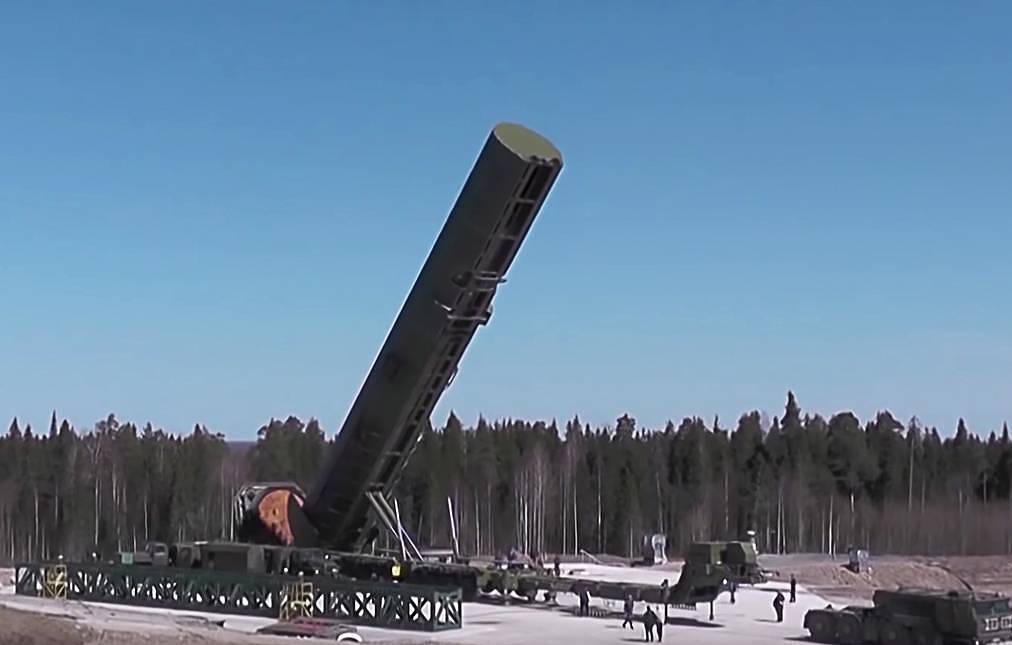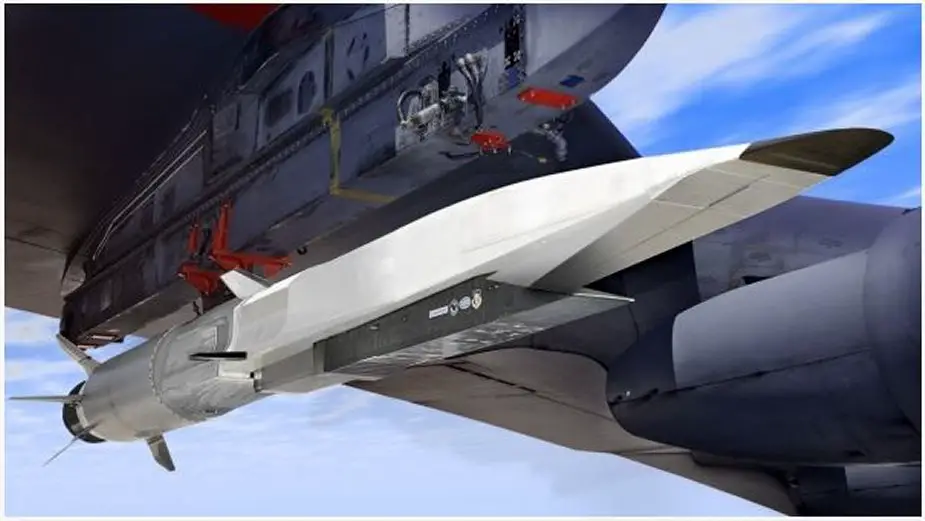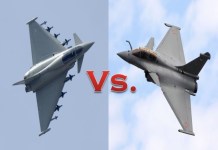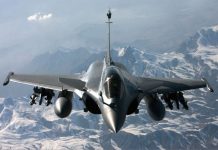In March 2018, Russian President Vladimir Putin unveiled new super-weapons during his speech at the Manezh Central Exhibition Hall near Kremlin, stoking fears among Moscow’s adversaries.
After J-20 Fighters, China’s Aircraft Carrier Battle Group Starts ‘Combat Patrols’ In The Western Pacific
With Russia adding supersonic missiles to its arsenal (that are almost impossible to detect and intercept), as was witnessed with the recent successful test of the Sarmat Inter-continental Ballistic Missile (ICBM) – one of the super-weapons announced in 2018 – it’s worth taking a look at other super-weapons that Putin has in his arsenal.
The most recent State Armament Programme (SAP) of Russia was signed by President Putin in 2016. The SAP is a ten-year document that is renewed every five years and approved by the President.
It sets out plans relating to the purchase of new weapons, modernization and repair of existing military equipment, and research & development (R&D) for new systems.
One of the major areas of focus in the new SAP was the ICBM with emphasis on how to evade missile defense systems. This was reflected in the list of super-weapons revealed in the famous 2018 speech of President Putin.
In addition to Sarmat ICBM, the list included the Avangard Hypersonic Glide Vehicle (HGV), the Poseidon nuclear-armed underwater unmanned vehicle (UUV), the Burevestnik nuclear-powered cruise missile, the Kinzhal air-launched hypersonic missile, and the Tsirkon ship-launched hypersonic missile.

The Avangard HGV
The Avangard is a hypersonic boost-glide vehicle with a range of over 6,000 km that can carry both, a nuclear and conventional payload. According to a TASS report, the HGV’s nuclear warhead is “more than 2 megatons in TNT equivalent.”
As a boost-glide weapon, the Avangard is carried to its apogee by a ballistic missile which until now has been the SS-19 “Stiletto” (UR-100NUTTH) but is slated to be replaced by the R-28 Sarmat that has just been successfully tested and planned to be deployed later this year.

The head of the Roscosmos space agency announced on April 23 that the new Sarmat ICBM will be deployed in the Krasnoyarsk region of Siberia, about 3,000km (1,860 miles) east of Moscow.
Once delivered to its suborbital apogee of about 100 km, the HGV separates from its rocket and cruses down towards its target through the atmosphere.
According to claims by President Putin himself, the HGV can cruise at atmospheric speeds of up to Mach 20 – twenty times the speed of sound – and it can maneuver to make its trajectory unpredictable for interception by air and missile defense systems.
It is also said to have the ability to deploy countermeasures during flight to confuse the defense systems.
Poseidon Underwater Unmanned Vehicle (UUV)
Poseidon is perhaps the biggest game-changing super-weapon in the Russian arsenal, as it stands to add another dimension to nuclear deterrence. The Poseidon is an ‘Intercontinental Nuclear-Powered Nuclear-Armed Autonomous Torpedo’
The weapon’s speed is expected to be around 70 knots – faster than existing torpedoes – and according to some reports maybe even 108 knots making it uncatchable, while its operating depth is said to be around 1,000 meters (3,300 feet), thus making it unreachable as well.

Powered by a nuclear reactor, the Poseidon UUV has an unlimited range affording it new levels of operational flexibility in terms of launch and target locations. It can also be launched from under the ice caps.
The Poseidon will be delivered by two nuclear submarines, the K-329 Belgorod special purpose submarine, which is a modified design of the Oscar II class cruise missile submarine, and the Khabarovsk class nuclear-powered submarines. Each of these submarines can carry six Poseidon UUVs.
The Poseidon UUV can destroy aircraft carrier strike groups (CSG) and enemy infrastructural facilities in coastal regions. It will most likely serve in the Pacific fleet that might pose a threat to US naval bases on the West Coast as well as key cities like Los Angeles.
Experts also suggest that Poseidon may have a seabed or mobile site launch option known as the Skif (Скиф). Russian auxiliary vessels Zvezdochka (Project 20180) and Akademik Aleksandrov (Project 20183), both of which have ice-breaking capabilities, are involved in the testing of Poseidon UUVs, indicating that these ships may be used as platforms for deploying and retrieving such a seabed version.
Burevestnik Nuclear-Powered Cruise Missile
Russia’s Burevestnik (RS-SSC-X-09 Skyfall) is an experimental nuclear-powered cruise missile with an unlimited range. Not much is known about this missile, as it is shrouded in mystery but there are a host of speculations about it.
According to Alexander Sharkovsky of Nezavisimaya Gazeta, the length of the missile is 12 meters at launch and 9 meters in flight. The nose has the shape of an ellipse, 1-meter × 1.5-meters in size.
Sharkovsky states that Burevestnik is a nuclear thermal rocket with a solid-fueled booster engine and presumably its warhead is a high yield thermonuclear charge.
While Pavel Ivanov from VPK-news suggests that Burevestnik is one and a half to two times larger than the Kh-101 and unlike the latter, its wings are located not at the bottom, but the top of the fuselage.

Ivanov further states that considering there is a nuclear reactor onboard, the missile must weigh several times greater than the Kh-101 thereby ruling out the Tu-160 or Tu-95MS as missile carriers for Burevestnik and suggesting the possibility of deployment on ships.
While reports have also indicated that ground-based TEL vehicles, such as MZKT-7930 special wheeled chassis with 8×8 configuration, as carriers for this missile.
According to US intelligence, there were several flight tests of Burevestnik between 2017 and 2019, but all of them were failures. After another failed launch test in 2019, one of these nuclear-powered missiles ended up in the White Sea. During the recovery attempt, the missile exploded, killing at least seven specialists and causing a radiation leak.
Reported claims from Russian sources indicate that this missile could become operational in around 2025.
Kinzhal Air-Launched Hypersonic Missile
The Kh-47M2 Kinzhal made headlines this year after Russia announced on March 19 that it had destroyed a weapons storage depot in the village of Deliatyn in the Ivano-Frankivsk region in western Ukraine using its ‘Kinzhal’ hypersonic missiles, marking the first-ever use of a hypersonic weapon.
It was again used the next day to hit a fuel depot in Kostiantynivka near Mykolaiv.
US President Joe Biden himself, while speaking about the missile at a conference with business leaders, said that “it’s almost impossible to stop it.”

The missile can travel at the speed of 5-12 mach and has a claimed range of 2000 km. It can deliver both conventional and nuclear warheads, but the conventional warhead can be delivered faster and with more precision.
It may be launched from Tu-22M3 bombers or MiG-31K interceptors.
Unlike hypersonic cruise missiles that use a scramjet for propulsion or a glide vehicle to handle reentry, the Kinzhal achieves hypersonic velocities through sheer raw force.
The Kinzhal entered operational duty in 2017 and it is essentially a modified version of the 9K720 Iskander, a short-range ballistic missile launched from the ground, with a new guidance system built exclusively for air-to-ground operations, according to the National Interest.
The missile is difficult to intercept because of its ability to maneuver at all stages of its flight path.
Tsirkon Ship-Launched Hypersonic Missile
Tsirkon is a scramjet-powered, vertically launched maneuvering hypersonic missile that is said to be able to reach speeds of Mach 9 and fly at an altitude of 30-40 km up to a range of 500 km.
Experts estimate its payload capacity at 300-400 kg and the missile length at 8-10 meters. Tsirkon is to be fired from universal vertical launchers 3S-14 on warships and submarines and Bastion mobile coastal missile launchers.
The missile can be armed with both conventional and nuclear warheads.

The missile was first test-fired in January 2020 from the frigate, Admiral Gorshkov which was followed by numerous trials in 2020 and 2021. One of the most important milestones was achieved in October 2021 when the missile was launched from Yasen-class submarine K-560 Severodvinsk.
Tsirkon is first taken to a high altitude by a solid-fuel booster and from there it follows a semi-ballistic ‘skip-glide’ trajectory. On reaching the target range a detachable warhead or kinetic energy is used to destroy the target.
Russian Deputy Minister Alexei Krivoruchko announced in January that the Tsirkon missile is at the final stage of its state trials and its serial deliveries to the Navy will begin in 2022.
- Written by Tanmay Kadam/EurAsian Times Desk
- Contact the author at etdesk@eurasiantimes.com
- Follow EurAsian Times on Google News




